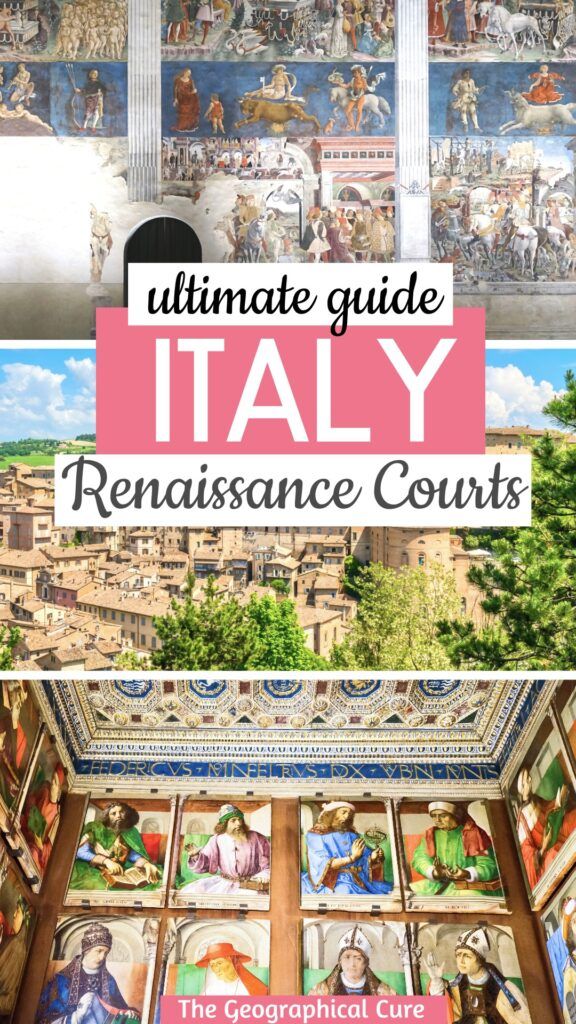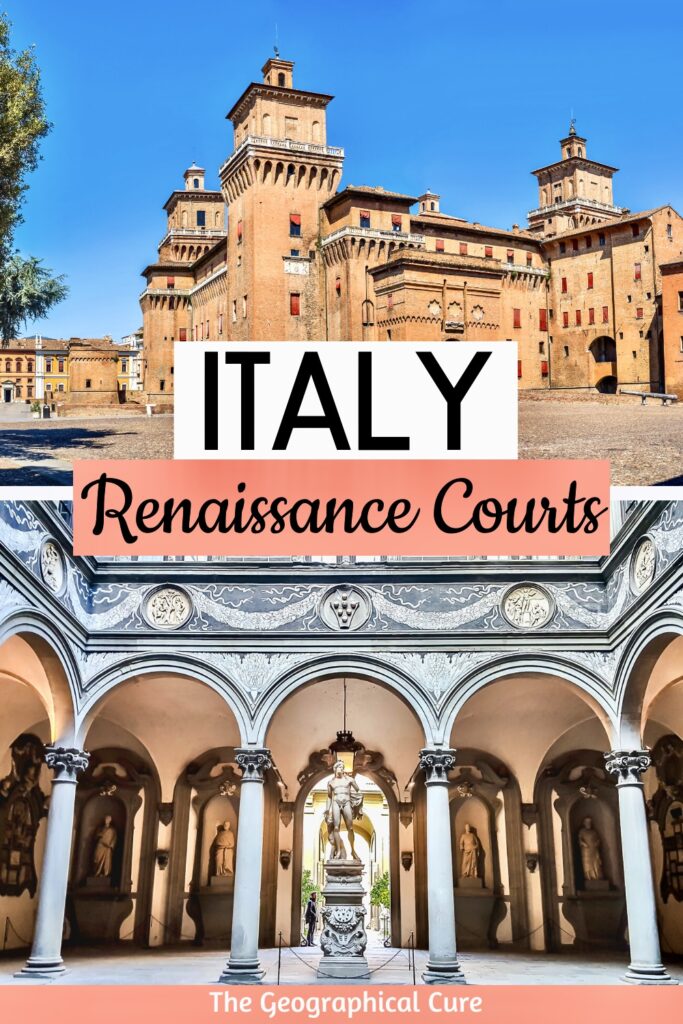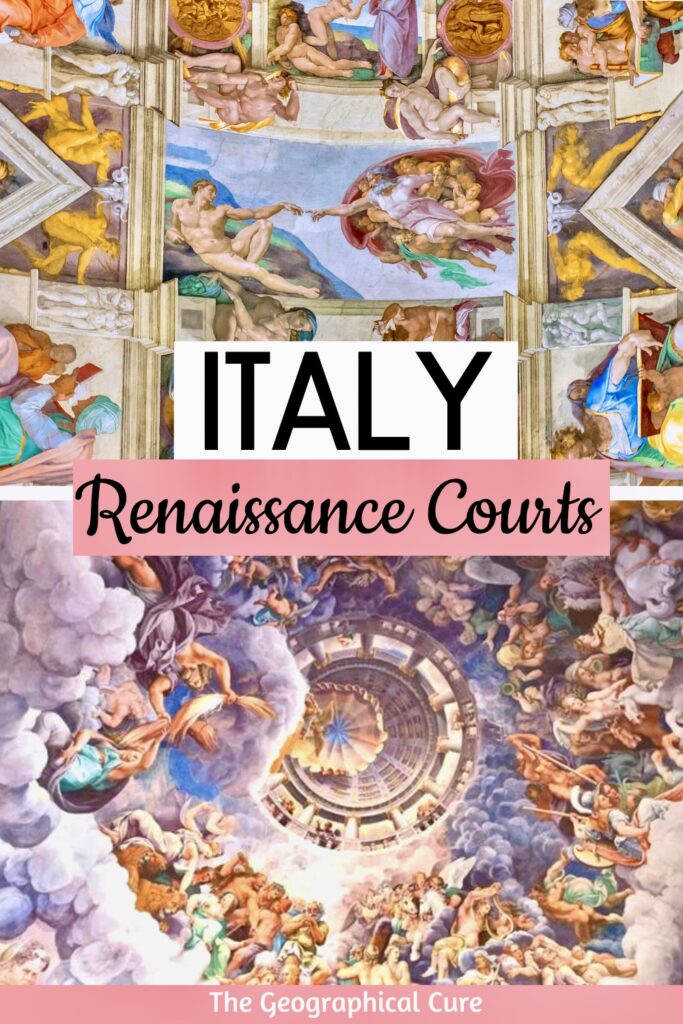In Renaissance Italy, the courts of the era flourished like never before.
The courts were comprised of a close knit entourage of courtiers surrounding the monarch or leader. They were artists, diplomats, aristocrats, philosophers, religious figures, or military figures.
These courts were more than just seats of governance ruling over their subjects.
They were epicenters of creativity, intellectual exploration, and political intrigue. They promoted a revival of humanism and classical learning.
The courts were also meant to embody refinement and an ideal of civilized life, all the while burnishing the reputation and glory of the prince in charge.
The courts were also crucibles of artistic innovation. Leonardo da Vinci sketched his masterpieces, Machiavelli penned his political treatises, and the melodies of madrigals filled the air.
In fact, the Renaissance courts of Italy commissioned and produced some of most beautiful art in history — the Mona Lisa, the Birth of Venus, David, and the frescos of the Sistine Chapel.
Court artists didn’t just paint either. They also arranged pageants, costumes, musical performances, and temporary exhibitions. Even the august Leonardo did that in Milan.
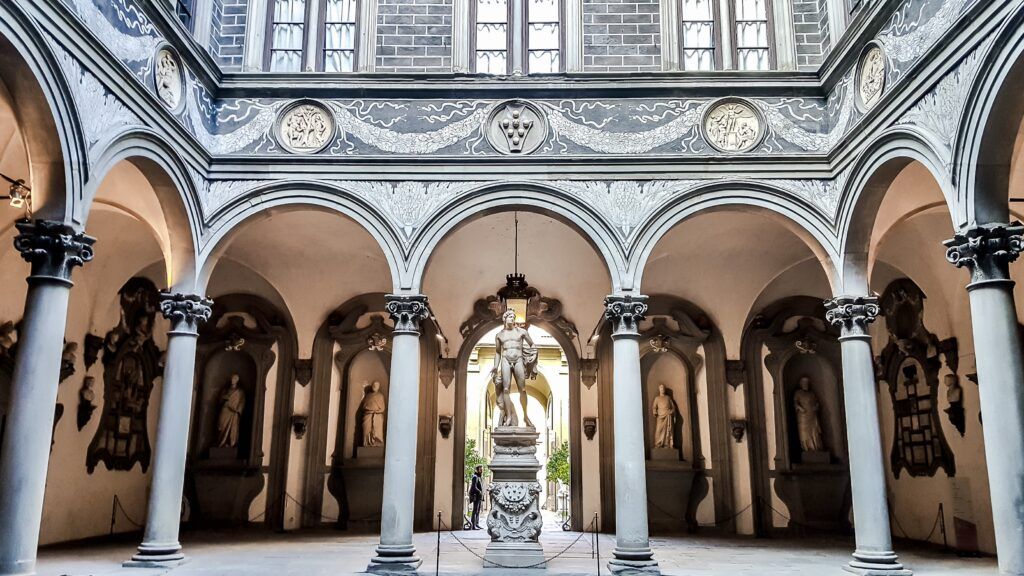
Renaissance Courts In Italy
Here’s a short history of the princely courts of Italy that really stood out. I give you an overview of each and identify the architectural and artistic masterpieces they produced.
The Medici Court in Florence
The Medici family was the unrivaled dynasty of the Renaissance period, running the most famous Renaissance court in Italy. They were bankers turned royals.
The Medici were not only renowned but also held immense power across Italy for centuries. The family even produced four popes.
The first Medici power brokers were Giovanni de Bicci de’ Medici and Cosimo I. But the most famous Medici was Lorenzo the Magnificent, who was a key player in the Italian Renaissance.
Known as “Il Magnifico,” Lorenzo was a charismatic man who made Florence the “Cradle of the Renaissance.” His palace was a lived in art gallery.
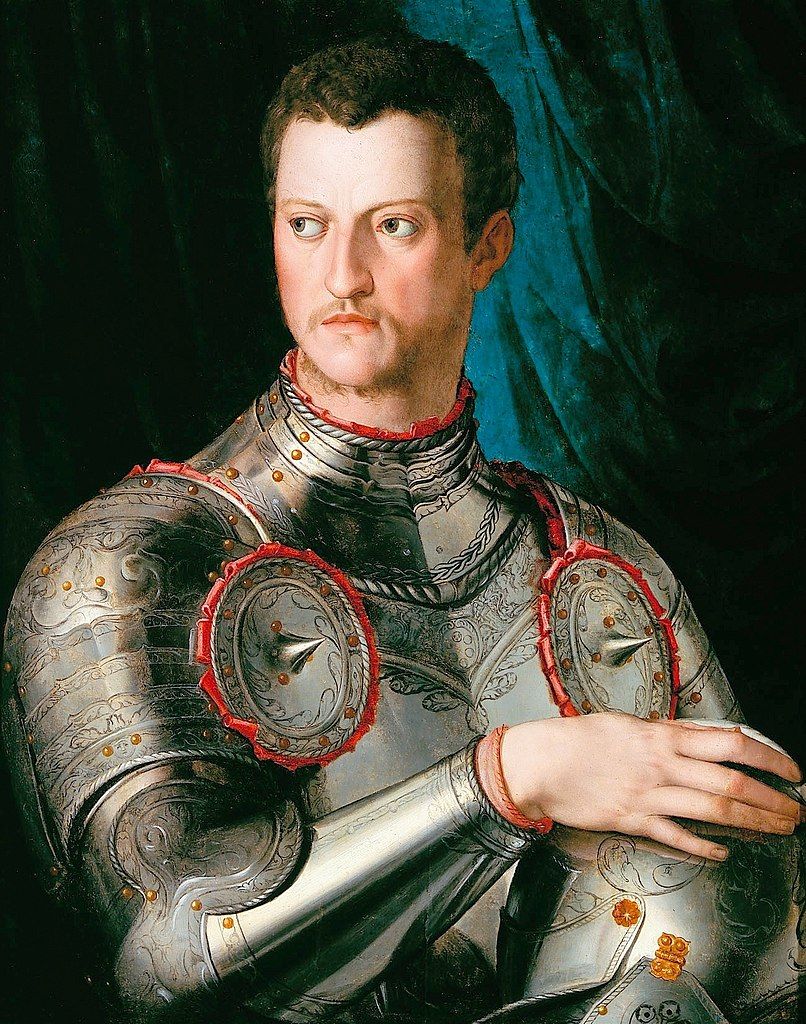
At his humanist court, Lorenzo gathered together the leading artists, intellectuals, and philosophers of the day.
Decades later, Grand Duke Cosimo I continued where Lorenzo left off. Installed in the luxe Pitti Palace, he kicked off a new age of portraiture and culture.
Sandro Botticelli was a Medici court painter, who created exquisite mythological works like The Birth of Venus and Primavera. Leonardo da Vinci and Michelangelo were both members of Florence’s court for some time.
The Magnificent also commissioned works from the likes of Brunelleschi, Bennozo Gozzoli, Masaccio, Filippo Lippi, Donatello, Bronzino, and Fra Angelico. The list of Renaissance masterpieces in Florence is endless!
The Medici were also responsible for some of the greatest Renaissance architecture. They built the three Medici palaces, the Uffizi Gallery, the Medici Chapels, the Vasari Corridor, and some of Florence’s most beautiful churches.
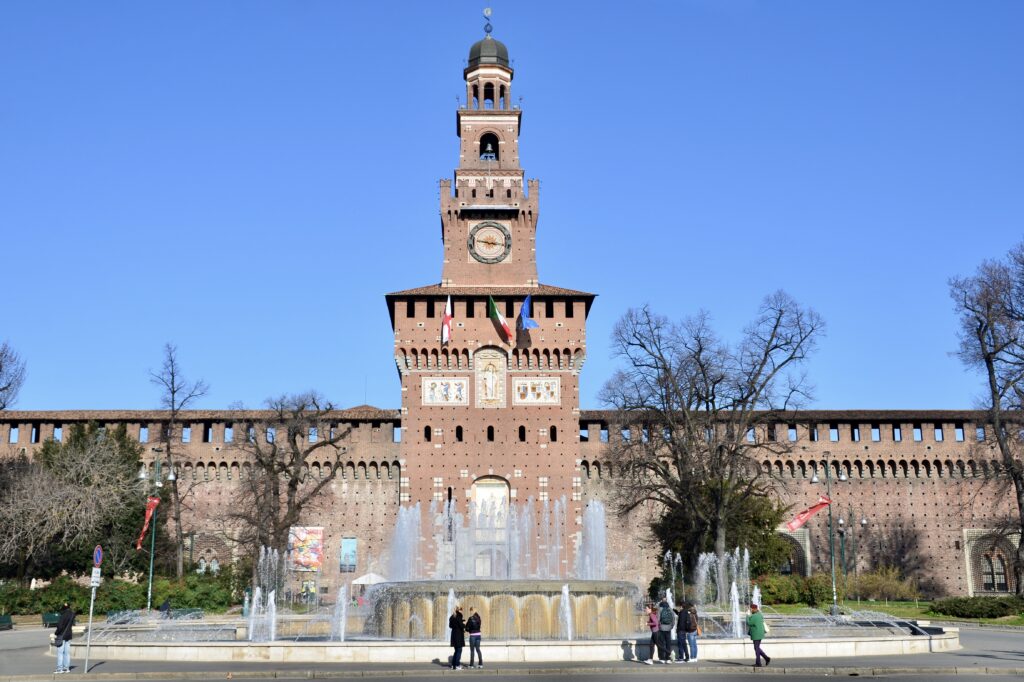
The Sforza Court in Milan
The duchy of Milan was ruled by the Sforza family. They wielded power from Sforza Castle, a stout defensive fortress.
The first important Sforza man was Francesco Sforza. He was the city’s “muscle,” a condottieri or mercenary who took over the city by force. Francesco married Bianca Maria Visconti, the heir to the previous Visconti rulers.
Not surprisingly, the court had a strong martial influence. It hosted jousts, falconry, and hunting.
His son, and heir, was Ludivoco. From a political perspective, Ludovico was a disaster. But from the view of artistic patronage, he was stellar.
He brought Leonardo da Vinci to Milan. In the city, the artists produced works like the Madonna of the Rocks and the Lady with the Ermine.
Leonardo also began to experiment with architectural theory. He was inspired by the Milan brainiacs club — Donato Bramanate, Lucca Paccoli, Francesco Martini.
If not for the Sforza court, then arguably one of the most paintings on earth would not be here for posterity — The Last Supper.
Sforza Castle itself is also chock full of Renaissance art. Today, it’s home to Michelangelo’s Rondinini Pieta and arboreal frescos by Leonardo da Vinci in the Salle delle Asse.
READ: One Day in Milan Itinerary
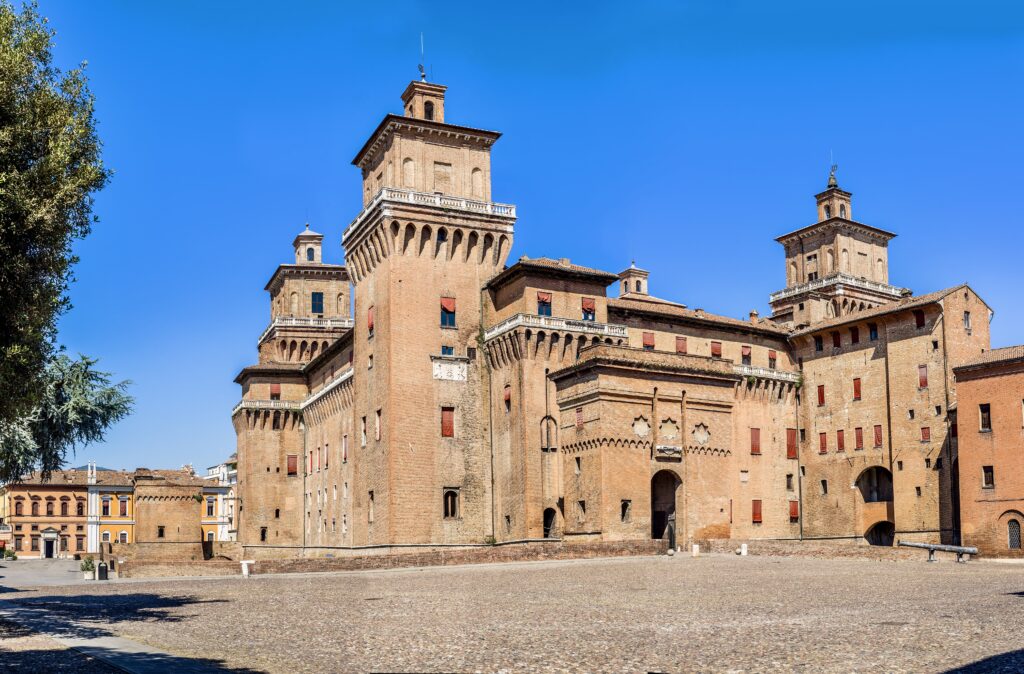
The Este Court in Ferrara
Ferrara, a hidden gem in Italy, was once a thriving Renaissance court in Italy. It’s famously known as the quarry for Michelangelo’s sculptures.
The city is handsome. In the Renaissance era, it was under the rule of the Este family, led by Duke Borso d’Este. He was the epitome of refinement and known for wearing his chivalry and rich clothing.
The Estes constructed magnificent buildings. They transformed Ferrara into a hub for poets, musicians, and humanists like Ludovico Ariosto and Torquato Tasso.
Este Castle was built in the late 14th century and even had a moat. It was built in response to an uprising against the family, who decided they needed a bit more security.
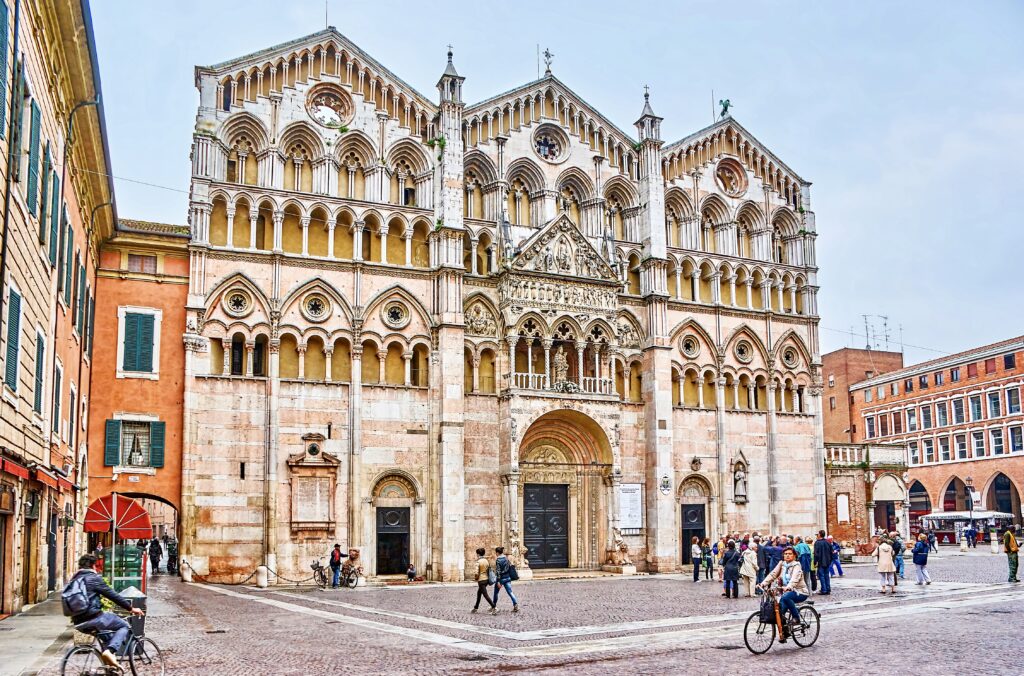
Ferrara also boasts a stunning Romanesque cathedral, featuring a unique facade with three equally tall bays and a grand portal guarded by lions.
Another notable site is Palazzo Schifanoia. Its name means it was place to escape boredom. This is where the Estes relaxed.
While it may look plain on the outside, its interior is a true marvel. The Hall of the Months is the most famous room.
It’s adorned with frescos by Francesco del Cossa. Unfortunately, the artist was paid by the square foot for his efforts and complained bitterly to no avail.
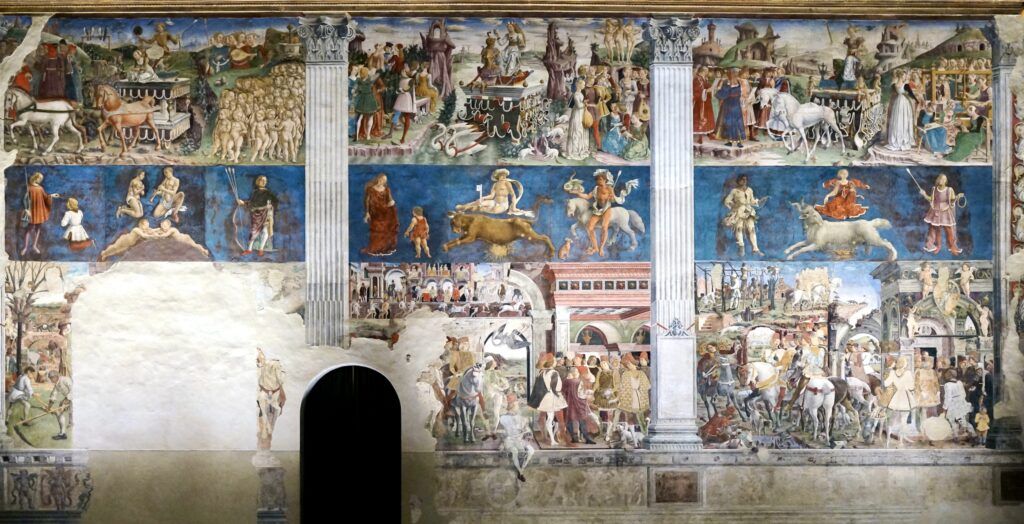
Every section of the wall is an allegorical representation of the twelve months.
Despite it being 1471, a religious time, there are only pagan images. This was more typical of the 16th century. The artist beat Sandro Botticelli to the punch.
Then there’s Palazzo dei Diamnati, the Palace of the Diamonds. It was built by Ercole d’Este. It looks a lot like the rusticated Renaissance palaces being built in Florence.
The facade is absolutely unique. There are 8500 marble blocks that are carved to suggest diamonds, such a unique motif for a building. Today, it houses the Pinacoteca Nazionale of Ferrara.
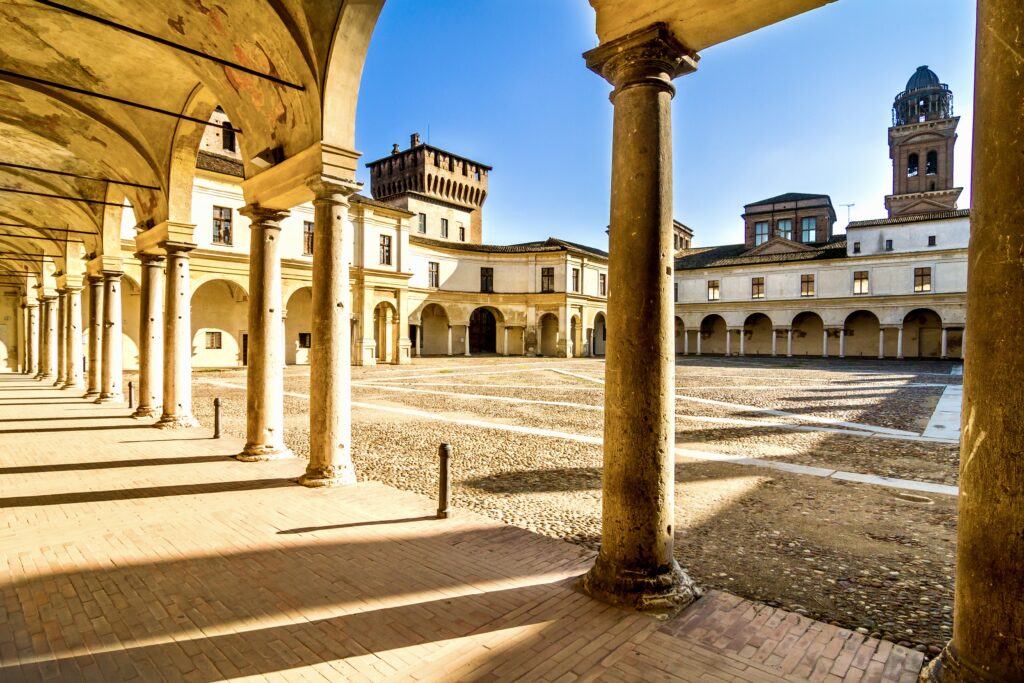
The Gonzaga Court in Mantua
Mantua is one of the best towns to visit for art lovers, courtesy of its great Renaissance court. The court was ruled by the Gonzaga family.
They took over Mantua from the previous family by force. They became dukes in 1530. The court patronized artists like Andrea Mantegna and Giulio Romano.
The Ducal Palace they built is absolutely gigantic. It’a a conglomerate of buildings, the largest royal palace in Europe.
The Castello San Giorgio is the most famous bit of the castle. It houses one of the most famous works of the Renaissance, the Camera degli Sposi by Andrea Mantegna.
If this artwork were in Florence, it would be a hot ticket. It’s a detailed representation of court life in Mantua, which gives you a taste of Renaissance life.
There’s a celebrated scene of Ludovico Gonzaga surrounded by his court. It’s almost a photograph with real life portraits and even the court dog, Rubino.
The illusionistic oculus on the ceiling is spectacular. It’s a remarkable example of foreshortening. It’s a playful image of people peeping down on the audience below.
The other important Renaissance edifice in Mantua is Te Palace.
Federico II Gonzaga built this castle on an island to get away from it all in the summer. It became one of the quintessential pleasure palace of the Renaissance.
It’s decorated with some extraordinary frescos by Giulio Romano. The racy frescos in the Hall of Cupid and Psyche and the Hall of Giants will knock you off your feet.
In the later, frescos surround you from top to bottom. You see Olympus descending on the titans below.
By the way, Federico was the son of the “First Lady of the Renaissance,” Isabella d’Este from Ferrara. She was a great patron of the arts, commissioning Titian, Mantegna and Leonardo to paint her portrait.
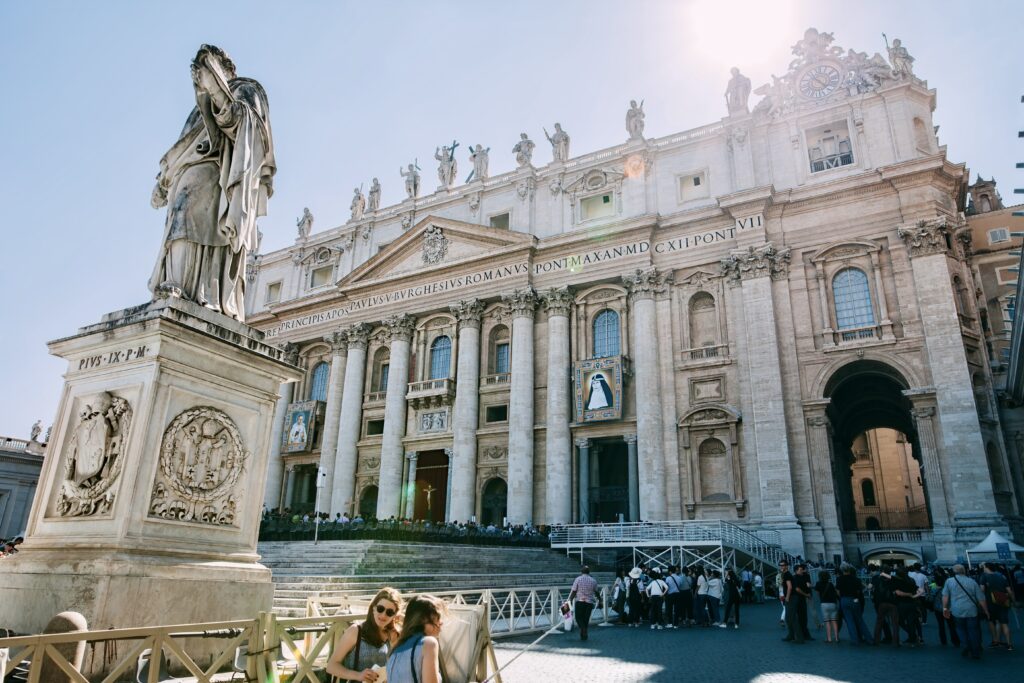
The Papal Court in Rome
At the heart of the Papal Court was the Pope, who served as the Bishop of Rome and the supreme head of the Roman Catholic Church.
By the 16th century, the center of the Italian Renaissance shifted from Florence to Rome, as Rome became a beacon of humanist ideals.
Several popes were leaders in Renaissance patronage. But none was as influential as Pope Julius II.
He was a visionary with a talent for inspiring artistic creation. Julius added beautiful Renaissance buildings to Rome and added the world’s greatest collection of antiquities to the Vatican Museums.
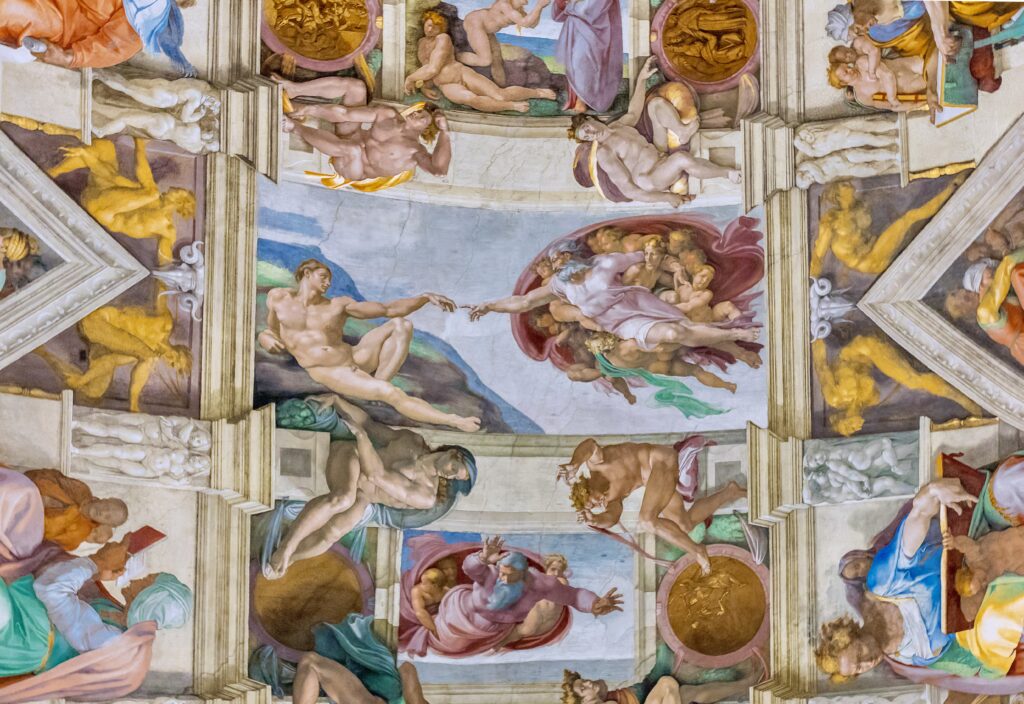
His most lasting legacy is the Sistine Chapel, the world’s most famous decorated space. It’s renowned for its breathtaking Michelangelo frescoes.
The ceiling depicts scenes from the Book of Genesis, including the famous Creation of Adam. On the altar wall is one of the first Mannerist masterpieces, The Last judgment.
Aside from Michelangelo, Rome attracted artists like Donatello, Masaccio, Leon Battista Alberti, Sandro Botticelli, Ghirlandaio, Perugino, Pituricchio, and Raphael.
Raphael was responsible for creating the Raphael Rooms in the Vatican. They contain a magnificent assemblage of frescos. The most famous is the School of Athens.
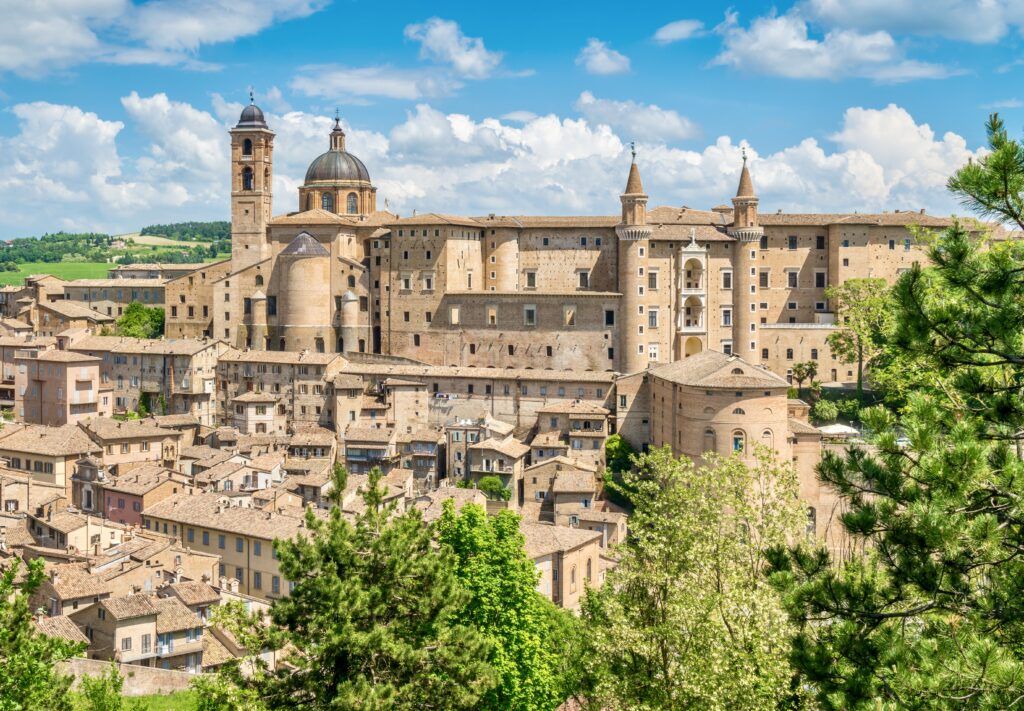
The Court of Urbino
The Renaissance court of Urbino was led by the powerful Duke Federico da Montefeltro. He was another mercenary general turned politician turned Renaissance scholar and art patron.
He went from count to marquis to duke. The duke was so feared he was paid not to fight.
Under Federico’s rule, the court of Urbino became a hub of humanism and culture. Federico himself was an educated man and a lover of the arts. He surrounded himself with scholars, philosophers, and artists, making Urbino a center for intellectual exchange.
Urbino was home to the artist Raphael and architect Donato Bramante. The court attracted important artists like Piero della Francesca, Paolo Uccello, and Raphael’s father, Giovanni Santi.
Baldassare Castiglione wrote the Book of the Courtier, the essential guide on the ideal courtly behavior.
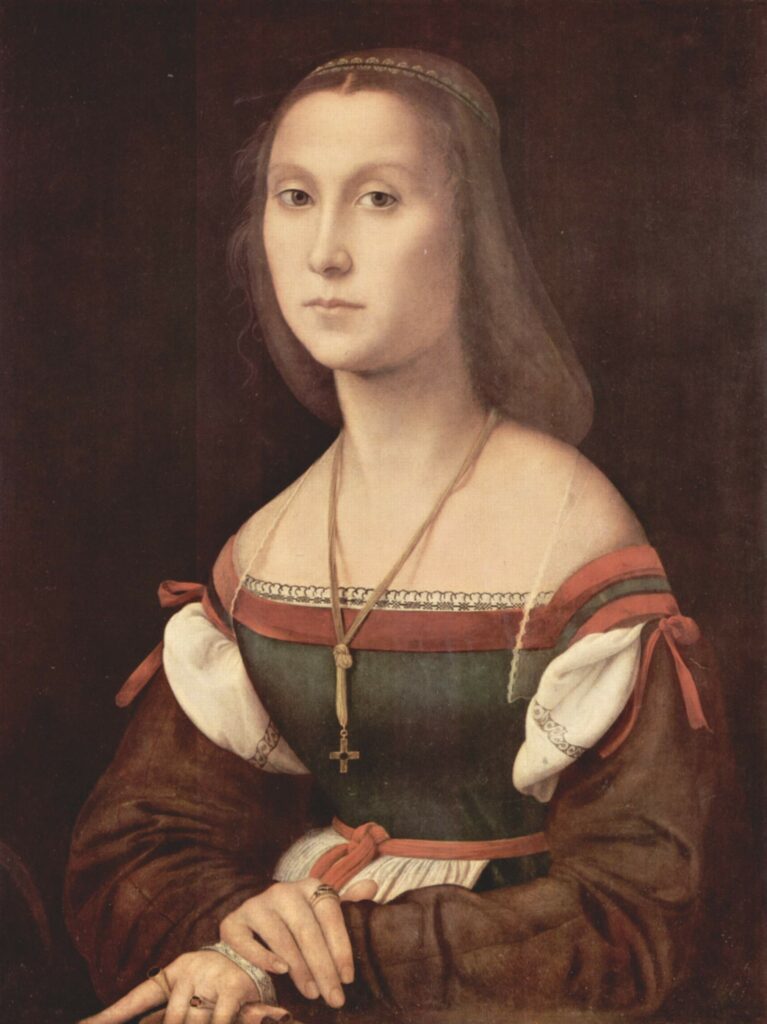
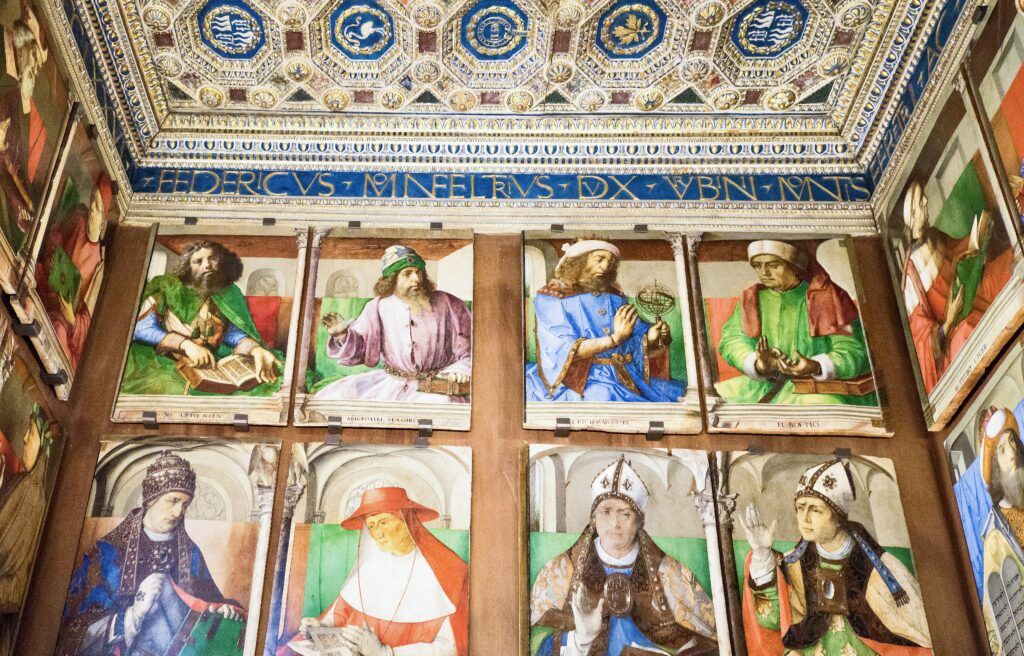
The Ducal Palace is a beautiful piece of Renaissance architecture by Luciano Laurana. The western facade has a loggia flanked with twin turrets. This was where the duke could step out and show himself to his minions.
Once you step inside, you are in a miraculously beautiful Renaissance courtyard. The palace once held countless ancient sculptures, musical instruments, and illuminated manuscripts.
Today, the palace is home to the National Museum of the Marche. It boasts some of the most famous paintings of the Renaissance including Piero della Francesca’s surreal and puzzling The Flagellation of Christ, Raphael’s luminous La Muta, and the Ideal City Panel.
But the most celebrated item in the ducal palace is the studiolo. It was the duke’s personal study where the duke would retreat to stimulate his mind.
It has beautiful inlaid wood, perhaps the world’s most famous example of Italian trompe l’oeil intarisa. And there are a series of portraits of the Illustrious Men, who were the duke’s role models.

The Court of Naples
The Kingdom of Naples was ruled by the Aragonese dynasty. It was the cultural hub of Southern Italy.
The top dogs included Alfonso V of Aragon and his illegitimate son, Ferrante I of Naples. The Castle dell’Ovo was their initial seat. Then, they moved to Castle Nuovo and built a marble triumphal arch in the center of the facade.
They made Naples a vibrant center for humanism, attracting intellectuals and artists from across Italy, including Giovanni Pontano, Giordano Bruno, and Jacopo Sannazaro.
Pantano was a Renaissance poet and military advisor to the king. He believed it was a mark of a ruler’s virtue to spend large sums on precious objects or paintings.
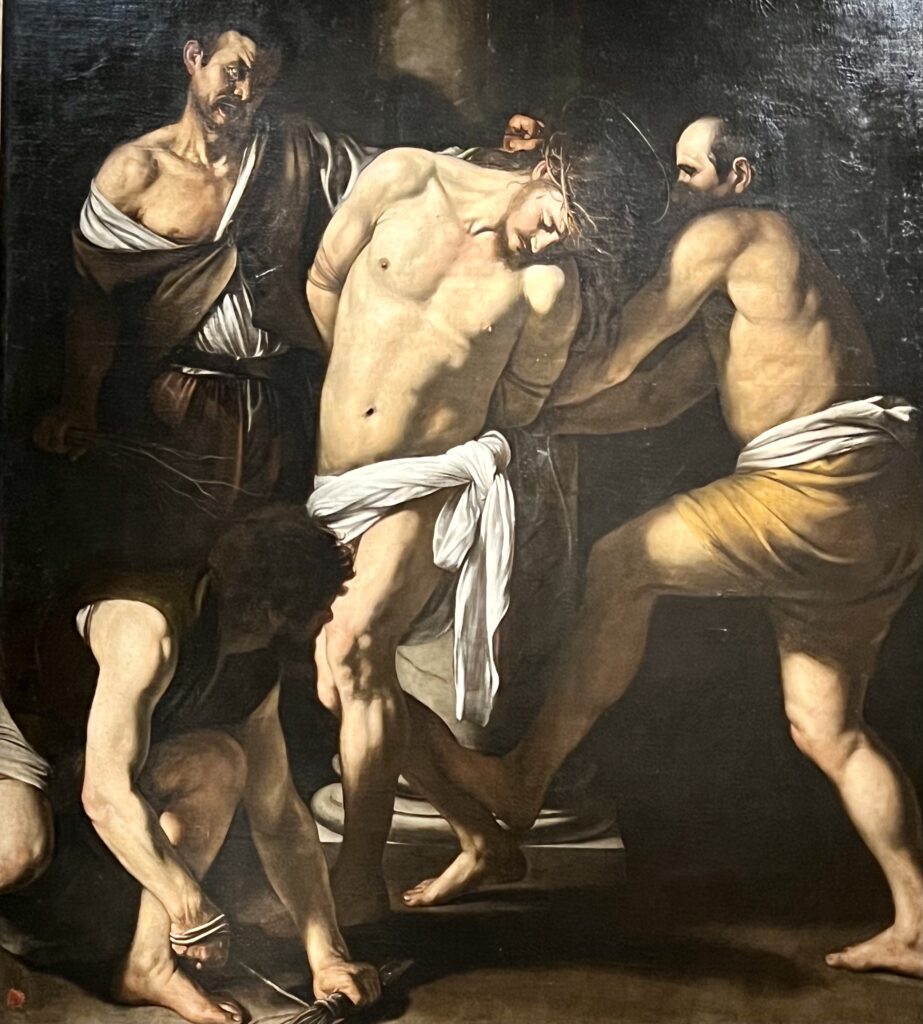
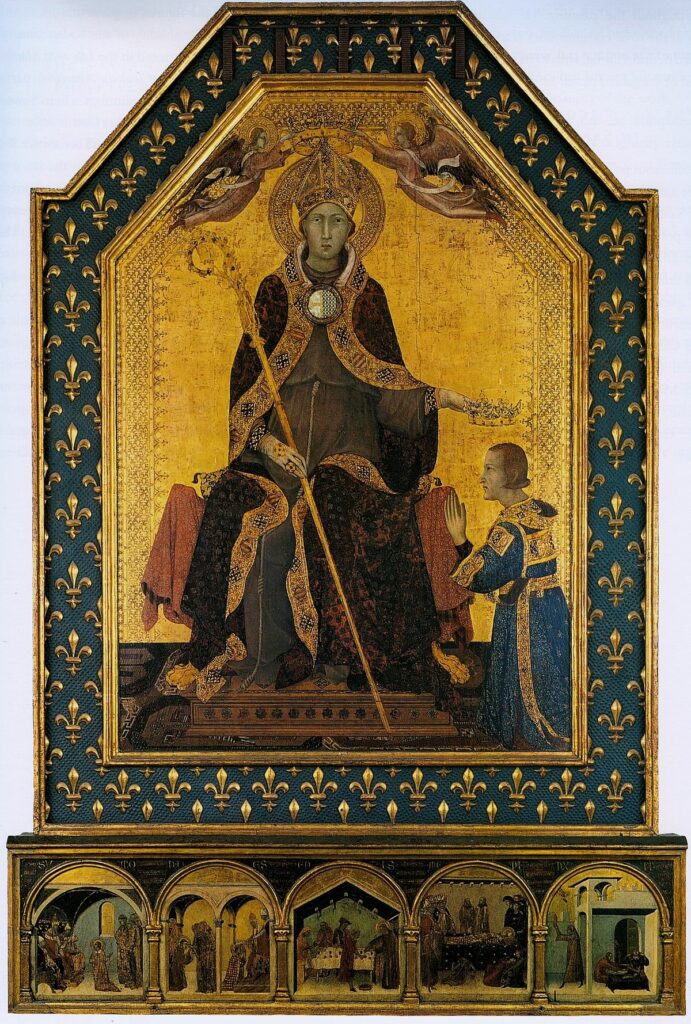
Extraordinary artists came as well. Simone Martini arrived from Siena and painted the beautiful work St. Louis of Toulouse, which is the Capodimonte Museum.
In the 15th century, Donatello was commissioned to sculpt a tomb. It’s one of his major works.
The Baroque artist Caravaggio also fled to Naples when he was a fugitive from justice in Rome. He left three paintings there. The most famous is the Flagellation of Christ in the Capodimonte.
I hope you’ve enjoyed my guide to the Renaissance courts of Italy. For more on Italy, check out my guides:
- 12 Ways To Spend 1 Week in Italy
- 5 Ways To Spend 1 Week In Sicily
- 10 Days in Italy Itinerary
- 10 Day Tuscany Itinerary
- Tips For Visiting Italy
- 100+ Bucket List Places in Italy
- Historic Landmarks in Italy
- Most Beautiful Towns in Italy
- 5 Days in Rome Itinerary
- 3 days in Florence Itinerary
- 2 days in Venice Itinerary
Pin it for later.

